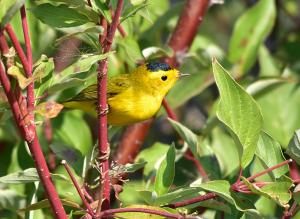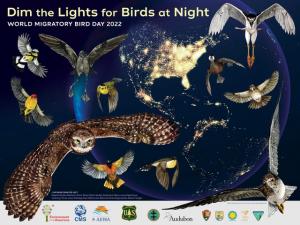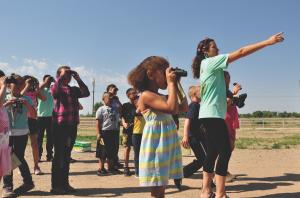Light Pollution Is Focus of World Migratory Bird Day 2022

Artificial light attracts and disorients birds like this Wilson’s Warbler, leading them to areas where they are more vulnerable to collisions and other dangers.
Global campaign aims to raise awareness of the importance of protecting the night sky for millions of migrating birds
BOULDER, COLORADO, UNITED STATES, May 3, 2022 /EINPresswire.com/ -- People across the globe are coming together for World Migratory Bird Day, an annual campaign that celebrates the migration of birds across countries and continents with a special focus in 2022 on light pollution. The campaign is coordinated by the nonprofit Environment for the Americas in partnership with the Convention on Migratory Species and the African-Eurasian Migratory Waterbird Agreement. World Migratory Bird Day 2022 is officially celebrated on May 14 and October 8, but events take place throughout the year.
This year’s campaign highlights the impact of light pollution on migratory birds with the theme “Dim the Lights for Birds at Night.” Artificial light is increasing globally by at least two percent a year, and each year, that light pollution contributes to the death of millions of birds. Artificial light from homes, businesses, and other infrastructure attracts and disorients birds during their nighttime migration, making them more likely to land in areas where they are more more vulnerable to collisions, predation, and other dangers.
“These birds undertake a grueling journey across thousands of miles, and many do not make it to their destinations because of problems like light pollution,” said Dr. Susan Bonfield, executive director at Environment for the Americas. “It’s on all of us to take action to ensure the continued survival of these long-distance travelers.”
Artificial light also impacts birds in the breeding and winter seasons, disrupting foraging and other vital behaviors. Throughout the year, World Migratory Bird Day coordinators will be highlighting the steps that individuals, communities, and governments can take to reduce the impact of light pollution on birds. Event organizers and participants are encouraged to incorporate this messaging into their outreach and activities.
“This year’s conservation theme sends a powerful message that anyone—and everyone—can help migratory birds complete their journeys safely,” said John Rowden, senior director of bird-friendly communities at the National Audubon Society, a major sponsor of the campaign. “Simple steps that individuals, buildings, businesses, and communities can take, such as dimming, shielding, and turning off external lighting, can make a big difference.”
World Migratory Bird Day serves as a call to action for the protection of shared birds facing increasing threats worldwide. The campaign is coordinated in the Western Hemisphere by Environment for the Americas, which works with hundreds of other organizations and thousands of individuals throughout the Americas. To find or register an event and to learn more about World Migratory Bird Day, go to migratorybirdday.org.
Susan Bonfield
Environment for the Americas
+1 9703931183
email us here
Visit us on social media:
Facebook
Twitter


